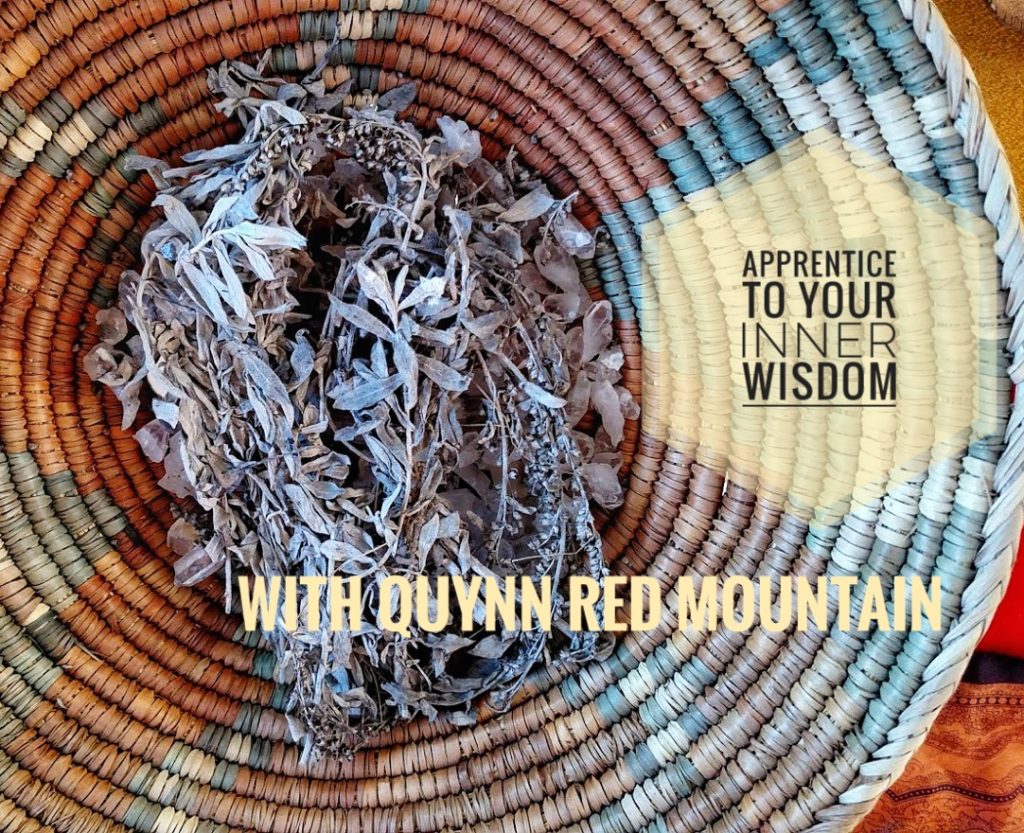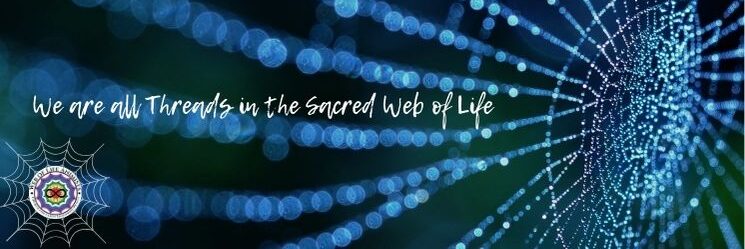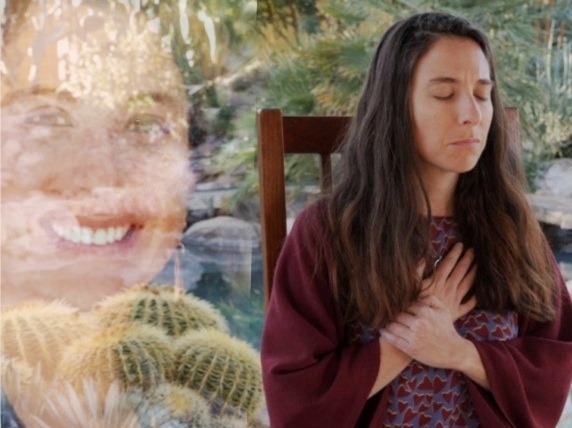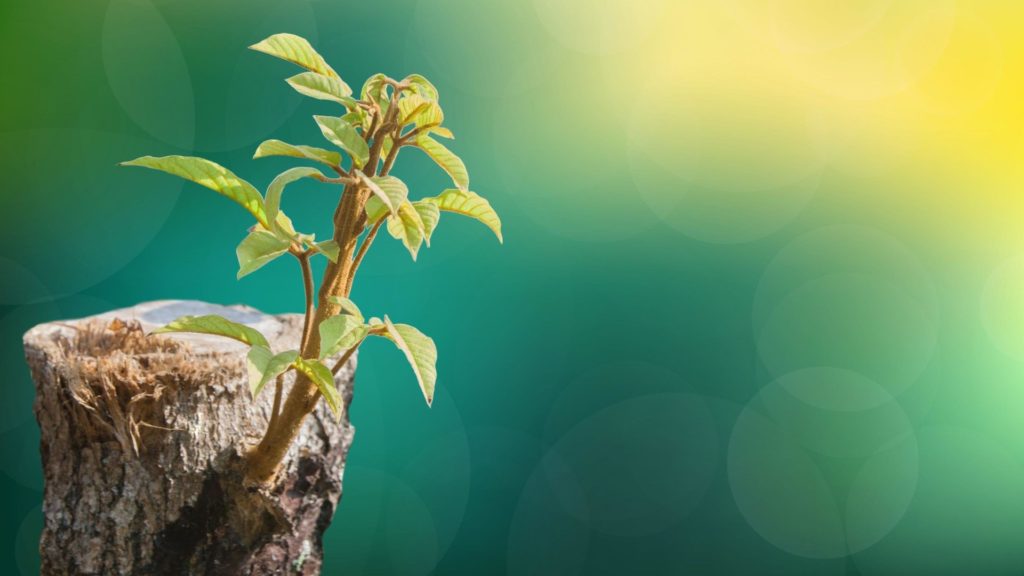Written by Quynn Red Mountain
May is called Mental Health Awareness Month and this post addresses expanded views of just a few common conditions that many sensitive people experience, and yet have been told by people who hold power in the colonized system that they are bad, a pathology, or are experiencing possession by an evil demon. This is just one cultural view. Many and most Animist cultures approach “mental health” quite differently.
Mental health is a socially constructed and socially defined concept; that is, different societies, groups, cultures, institutions, and professions have very different ways of conceptualizing its nature and causes, determining what is mentally healthy, and deciding what interventions, if any, are appropriate.
Wikipedia-Mental Health
According to the World Health Organization (WHO), mental health is “a state of well-being in which the individual realizes his or her own abilities, can cope with the normal stresses of life, can work productively and fruitfully, and is able to make a contribution to his or her community”.
People in good mental health are often sad, unwell, angry or unhappy, and this is part of a fully lived life for a human being. In spite of this, mental health has been often conceptualized (by colonized mindset) as a purely positive affect, marked by feelings of happiness and sense of mastery over the environment.
However, such a perspective of mental health which champions positive emotions and excellence in functioning, respectively, risks excluding most adolescents, many of whom are somewhat shy, those who fight against injustice and inequalities or are discouraged from doing so after years of useless efforts, as well as migrants and People of Color experiencing rejection and discrimination.
The concept of positive functioning is also translated by several definitions and theories about mental health into the ability to work productively, and may lead to the wrong conclusion that an individual at an age or in a physical condition preventing her/him from working productively is not by definition in good mental health. Working productively and fruitfully is often not possible for contextual reasons (e.g., for migrants or for discriminated people), which may prevent people from contributing to their community.
There is a proposed definition change, and it is reported here:
Mental health is a dynamic state of internal equilibrium which enables individuals to use their abilities in harmony with universal values* of society. Basic cognitive and social skills; ability to recognize, express and modulate one’s own emotions, as well as empathize with others; flexibility and ability to cope with adverse life events and function in social roles; and harmonious relationship between body and mind represent important components of mental health which contribute, to varying degrees, to the state of internal equilibrium.
*The values we are referring to are: respect and care for oneself and other living beings; recognition of connectedness between people; respect for the environment; respect for one’s own and others’ freedom.
The above content was drafted as part of the activities of the Committee on Ethical Issues of the European Psychiatric Association. https://www.ncbi.nlm.nih.gov/pmc/articles/PMC4471980/
An Animist View of 4 Common “Disorders”
While I do not advocate stopping of medication or abandoning any diagnosis you might have received from a medical health professional, I would like to share some Animist ways to think about the following diagnoses. No judgement is waged at parents, I am simply offering ideas for expanded awareness and new growth.
ADHD- Many young people are diagnosed with a version of this condition. A few things to consider are: How many hours is the child/youth expected to sit in a chair/desk at “school”? How many hours a day are they looking at screens? How often do they get the opportunity to put their hands and feet in the dirt, water, touching trees or plants (sometimes called “Earthing”)? How many servings of sugar and other processed foods do they eat in a day, each day? Might they feel bored by the content being shared with them at school? Another aspect can be a sensitivity to light, sound and energy in a group, which can be challenging for untrained sensitive youth.
Hearing Voices/Experiencing “Hallucinations” (Psychosis)- Hearing voices and/or seeing people/energy that others do not see is not a “disorder” and does not mean someone who does is “sick”. Animistically speaking, the world is alive and there are multiple layers of reality within and around us, so to hear, sense and see these layers, “beings”, ancestors and energies is actually normal. What matters is what is being transmitted to the person-Are they being told to hurt self or others? That is troublesome and help is needed. However, most of the time the messages or visions are informational, conversational, and mystical, and it is the biases and fears of another that can lead to negative and unhelpful outcomes.
It also indicates that the person who is seeing and hearing has extrasensory abilities that can be cultivated and trained so they are helpful to self and others.
Depression- There are many reasons to be deeply depressed in this challenging colonized culture, including racial/gender inequity and climate collapse. Depression can also be a symptom of untended trauma from earlier life, especially childhood trauma. Seek a healing helper to work with the reasons (all of which are valid) fueling the depression, in addition to any medication that may be taken. Know that healing trauma can take years, but it is worth the effort (with helpful healing allies).
Dissociative identity disorder (DID), previously known as multiple personality disorder (MPD)-Whether Animist or not, many sensitive people can perceive those who have passed on, those who are stuck in between realms, and the Spirits (those not embodied) from this world and beyond. In Shamanic cultures, a “Shaman” merges with a healing Spirit who works through the Spirit Worker. If someone is channeling another Being, and is untrained in doing so, they may be called DID. Many Shamans and Spirit Workers in the past have been diagnosed as this by colonizers.
The above potential does not rule out the need to examine any trauma in one’s past that has caused one’s personality to “split”. Healing, acknowledging and tending trauma can do so much for someone to shift towards integration and wellness over time, again…with a healing helper.
All ideas above are offered as suggestions, not as diagnosis or treatment.
This post is in honor of Web of Life Minister Julie Birns, Psychiatric Nurse Practitioner who struggled with her own mental health, and she helped so many others before passing from cancer in Winter of 2020. The featured image is of her practicing her Heart Rhythm Meditation, and her smiling bright. Read her article called “The Best Medicine” from 2017 here.

Apprentice to your Inner Wisdom
This recording is for you who feel called to the animist path and want to expand your skills of connecting with your Spirit World in a personalized way. 42 minutes. Two drum journeys.



